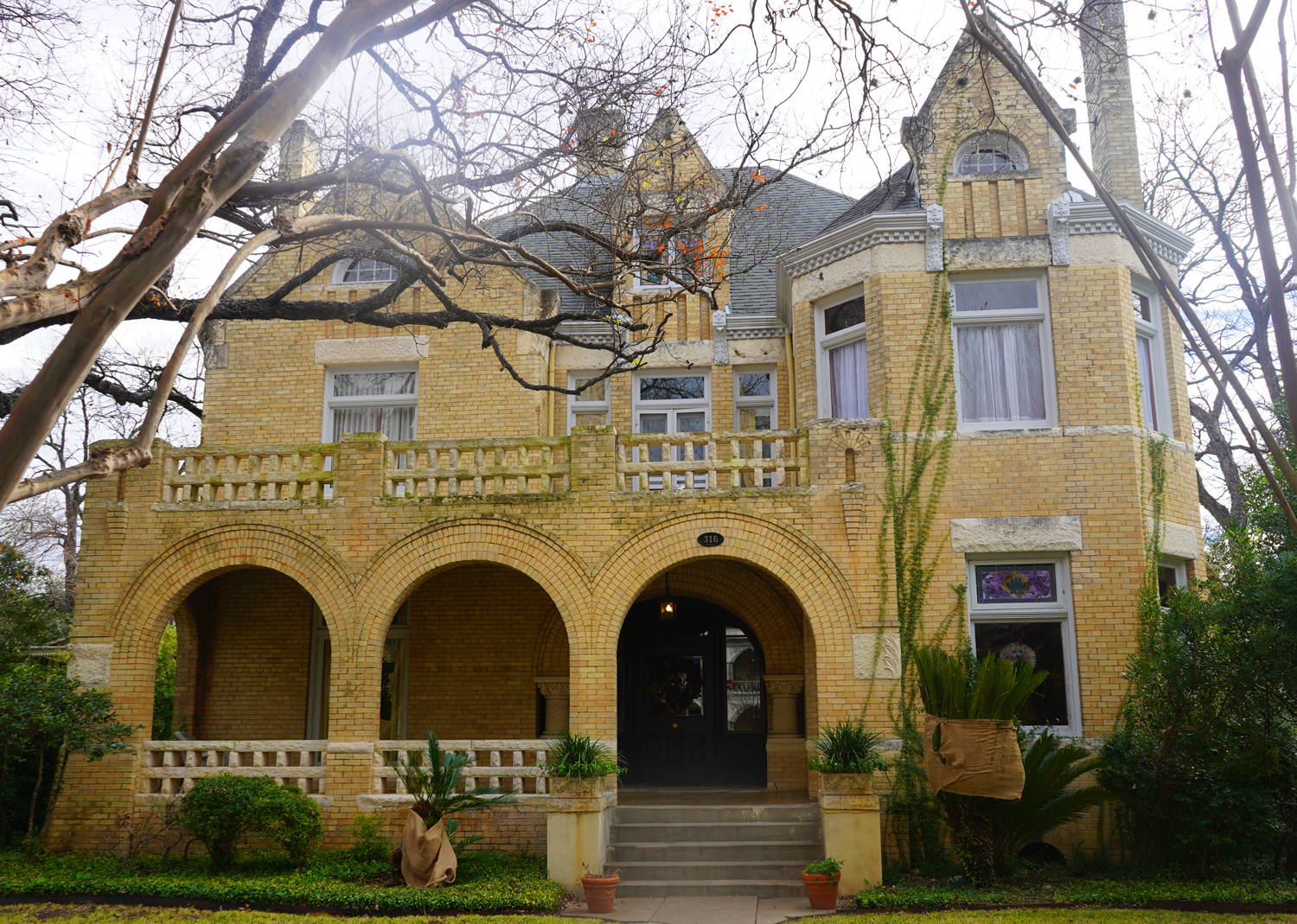Oppenheimer House

316 King William STREET
This home of banker M.L. Oppenheimer is a late example of Romanesque Revival. It is built of brick with carved stone detailing, the opposite of what would have been the case a decade earlier and has a deep front porch and rear second-story porch to provide shelter from the summer sun. The interior is finely detailed with oak paneling, parquet floors and art glass windows.
‘San Antonio Architecture, Traditions and Visions’, AIA San Antonio, 2007
The M.L. Oppenheimer House, 316 King William Street
M.L. Oppenheimer House is a Victorian Richardsonian Romanesque Revival house built of brick with carved stone details. On the northeast corner is an octagonal belvedere topped by an octagonal roof and finial. Notable details are the stone lintels above the windows, arched porch bays and the stone porch railings. Alfred Giles purchased four lots, these two along with the two next door, in 1882 for $2050. When M.L. Oppenheimer, a well-known banker and founder of several banks in Texas, purchased these two lots in 1900 the price was $2250. The lots had been sold four times, each new owner making a bit of profit on the sale. The house, occupied by M.L. and Rachael in 1901, was originally numbered 320. The Oppenheimer family lived at this address until 1963, when Raford Dobie purchased the house from the son, Max Leon Oppenheimer. Mr. Dobie, one of the founders of the King William Association (KWA), renovated all the woodwork inside, including the oak paneling and the French parquet floors. The first meeting of the Association was held in his home and it was the only house open for the first KWA Home Tour in 1967.
In 1972 Mr. Dobie sold the house to General W.C. McGlothlin, Jr. and Richard Orsinger has owned the home since 1983.
The King William Area, A History and Guide to the Houses, Mary V. Burkholder and Jessie N.M. Simpson; published by the King William Association, 2017